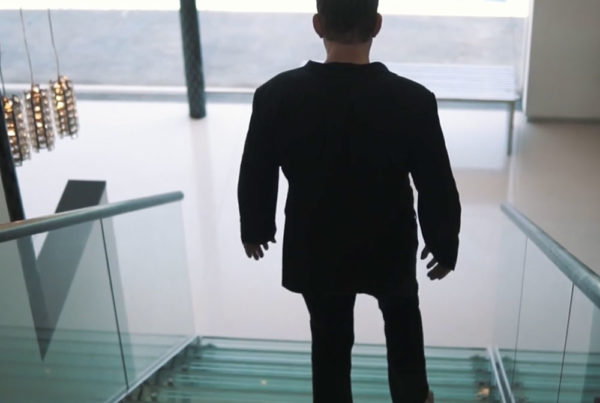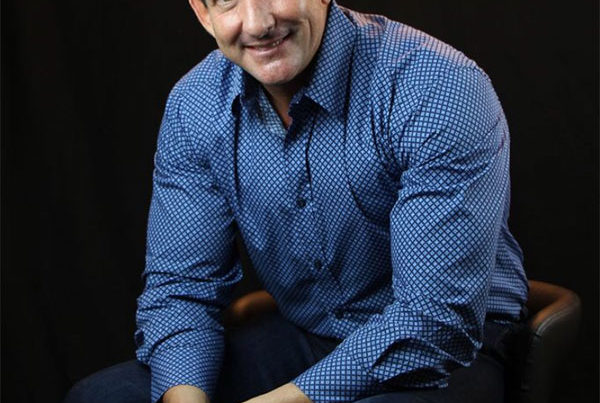While many unpredictable situations come up during our lives, a dire need to make a change can become so overwhelming that it freezes one into immobility. This sinking feeling is plain, simple, and ultimately defined as the fear of the unknown. The culprit? Raw emotions that create an overwhelming amount of contradicting thoughts while trying to control a potential setback. Resilient people have a striking ability to tolerate these fears by being okay with not controlling something that cannot be controlled. How is this possible for some of us, and not for others?
The answer is that it all depends on how much meaning you give the potential setback – or if you prefer, the word “failure”. Whether personally or professionally, one can take failure head-on in one area of their life while in another area letting a setback hit their ever-so-close emotional soft spot with an urge to make pounding retreat, or just “give in and give up.”
Whether someone gets passed up for a new position, or if they fail to close an agreement, people that don’t give up tackle failure as a massive learning opportunity. Growing through setbacks is the greatest way to excel fast – and the faster you grow with the setbacks, the less emotional pain you’ll ultimately experience. This will ultimately turn into the strength to take on more challenges.
Here are the five strategies to reverse failures:
- People that take on failures recognize that no matter how low they might feel at the time, things could always be worse. They give less meaning to the bad (and more meaning to the good) by following up and doing research on how to improve what originally failed. Those that are determined to take a crack at it again learn to keep going until they get it right. The outcome? CONFIDENCE! This is a great opportunity to stop projecting ahead from “I can do this” to “I will do this, and this time I will be 10 times more prepared.”
- Search for ways to remove excuses as opposed to living in them. Constantly look at improving problems to solve, lessons to be learned, and ultimately understanding that wisdom comes from experiencing both the good and bad – not by simply justifying why something doesn’t work. Evidence is a great way to measure how something that seemed to go so wrong at first can go so right over time, and by building an evidence list of trial and error.Consistently make small improvements, which can be uncomfortable at first if you are pushing through self-doubt. Always embrace this approach and you will be thankful as time goes on.
- Be at peace with being sensitive. Strong people aren’t afraid to admit they are sensitive and vulnerable, and that weaknesses are opportunities to improve. Here is where awareness makes a big impact on how one sees their behavior effecting themselves or others. Sometimes we fail to see our own poor behavior until it is too late, or we lose the ability to recognize it at all. Asking questions from peers and other quality-driven people is critical in avoiding potential failures that could be lurking now or in the future. Humility is a major strength, and ego can be the shadow to a potential failure.
- Keep track of your failures and list how you turned them into strengths. Step back and look at your strengths – they typically come from things that you practiced the most and focused on more than anything else. This is powerful if you realize that most things are relative, and how you utilize your strengths can be beneficial in all areas of your life. Taking on the hardest things will pull out your greatest strengths during the toughest times. Those that embrace failure have acknowledged their toughest times in the past in order to learn what not to do in the future. When people acknowledge their strengths they do it not to prove to others that they’re right in everything they say or do, but to prove to themselves that they can do it again and again.
- Learn the roadmap that creates a better plan for the future. Instead of viewing failure as one road with a stop sign, view it as the opportunity to build a road that has no stop sign – with turns that lead to other roads and greater places. This is your beginning point. Finally, failure is not an end – and quite frankly, the word is overused and meaningless unless you give it the power to have meaning. No one’s self-worth should be determined by failure. If it were, we would not have power or electricity. People that view failure as a springboard no matter what they do in life feel good about themselves regardless, and that is the true definition of happiness.
– Tim S. Marshall, Author of “The Power of Breaking Fear”
Click Here to Download “The Power of Breaking Fear” audiobook!
Some reviews of “The Power of Breaking Fear”:
“The Power of Breaking Fear”
“Tim S. Marshall has gone out of his way to arm his readers with a seemingly endless number of vitality strategies that are easy to incorporate into one’s daily life. The Power of Breaking Fear belongs on every bookshelf.”
– U.S Review
•••
– Independent Press Award (IPA)
“The Power of Breaking Fear” winner for Best Audio and book Content!
•••
“The Power of Breaking Fear” is a must-read for anyone who is frustrated in life, and wants to achieve true long-lasting success and happiness.”
-Paul Noble, 5-Time Emmy Award Winner
•••
“The Power of Breaking Fear” is one of the most fascinating books I have seen. A fresh new look to end the fears that hold us back from true success.”
– Kenneth Blanchard, #1 Best-Selling Author of The One Minute Manager, 13-million copies sold.




